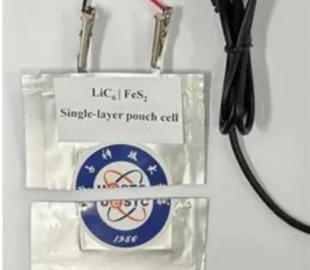After more than 100 charge-discharge cycles, the “pack” type battery worked when folded in half and even cut. After 300 cycles, the “tablet” battery retained 72% of its initial capacity.
The University of Electronic Science and Technology of China has developed a prototype lithium-sulfur (Li-S) battery that can work even when folded or cut. This will help in solving the safety problems of batteries of this type, writes interestingengineering.com.
Scientists have previously proposed using a carbonate-based electrolyte that can separate iron sulfide and lithium electrodes to make lithium-sulfur batteries stable at high temperatures. However, the sulfide from the cathode continued to dissolve in the electrolyte, forming a precipitate that could not be removed. A research team from the University of Electronic Science and Technology of China proposed adding another layer between the cathode and the electrolyte to minimize sulfur dissolution without affecting the chargeability of the cell. After experimenting with several materials, the scientists found that polyacrylic acid (PAA) was the best option because it retained its discharge capacity after 300 charge-discharge cycles.
200% Deposit Bonus up to €3,000 180% First Deposit Bonus up to $20,000The researchers then produced prototype battery packs and tablets with a PAA-coated iron sulfide cathode, a carbonate electrolyte, and a graphite-based anode. After more than 100 charge-discharge cycles, they found no signs of decay in the “pack” cell, which also worked when folded in half or even cut. After 300 cycles, the pill cell retained 72% of its original capacity.
“The difference in capacity retention between pill and packet cells may be due to their structural differences and how they cope with electrochemical reactions”, — commented the developers. — “Package cells typically have better mechanical integrity and lower resistance, which may explain the better performance.”
The researchers then coated the cathodes of lithium-molybdenum and lithium-vanadium batteries. If this technology proves feasible for commercial use, lithium-molybdenum and lithium-vanadium batteries could find applications where high energy density and durability are critical.

